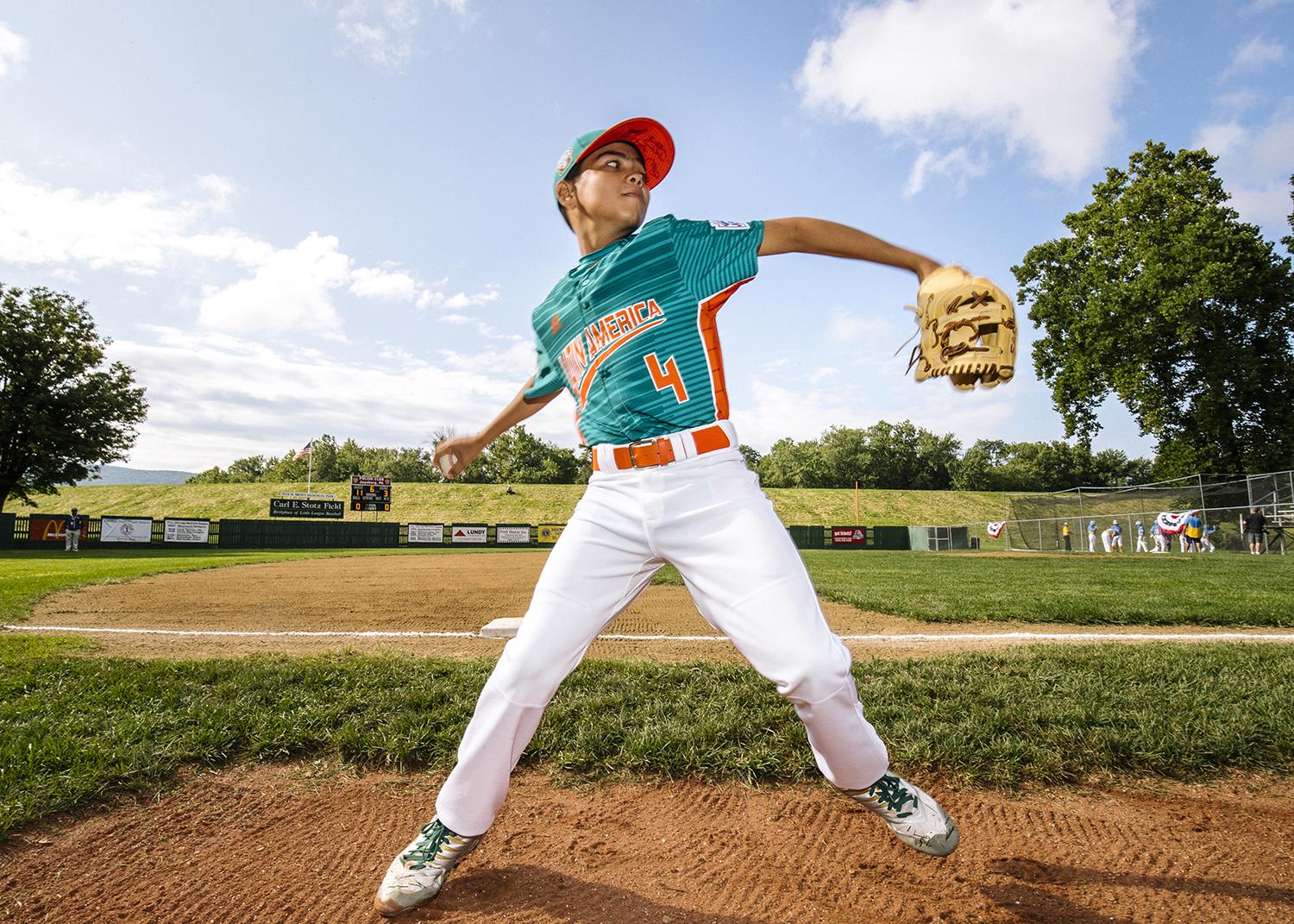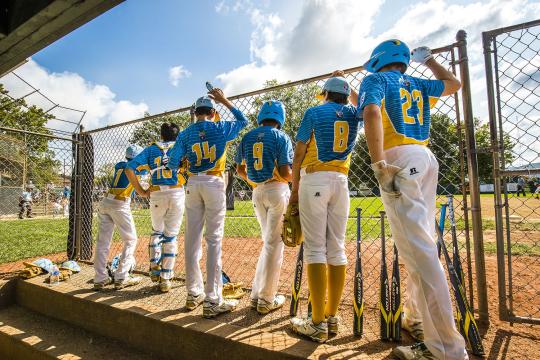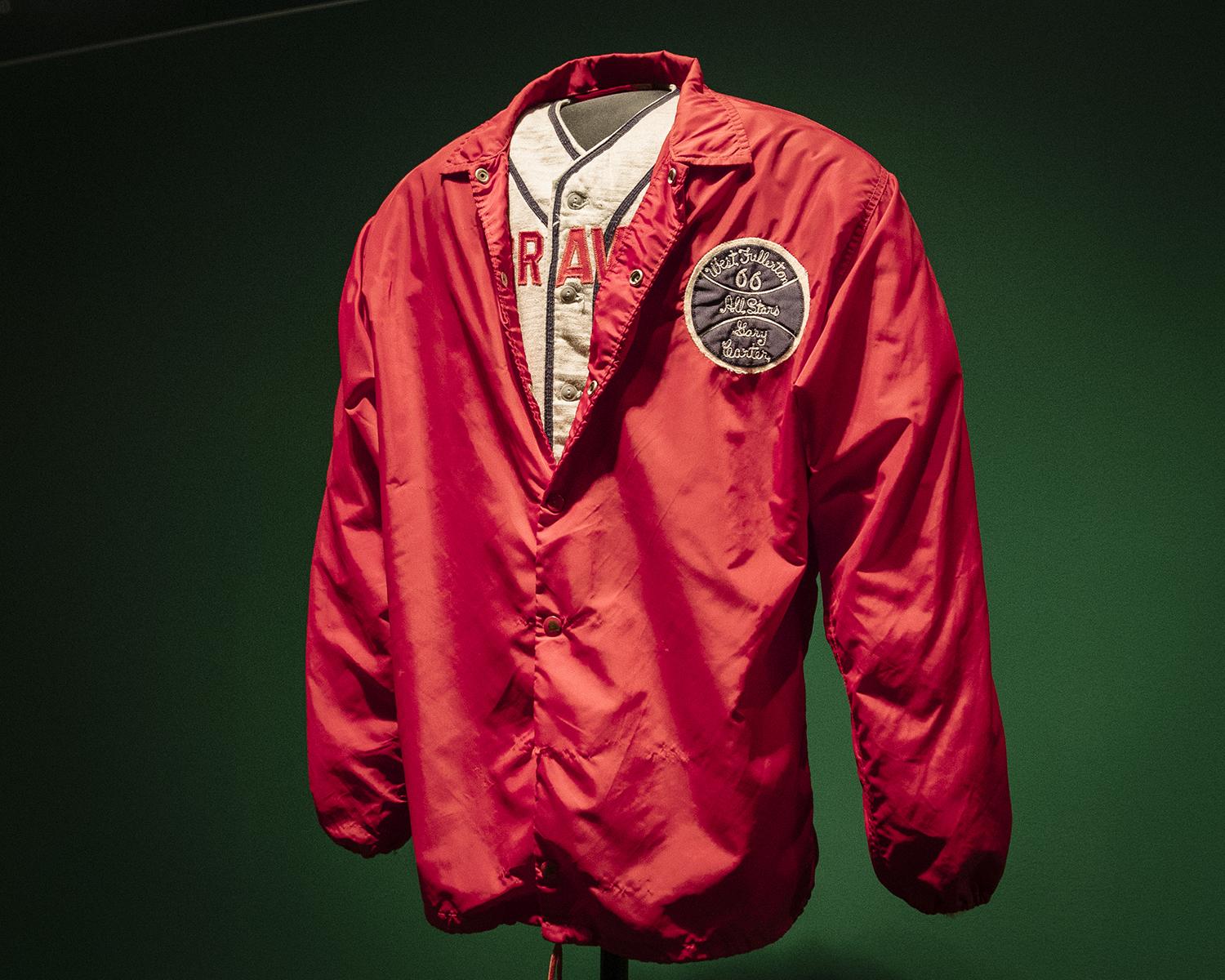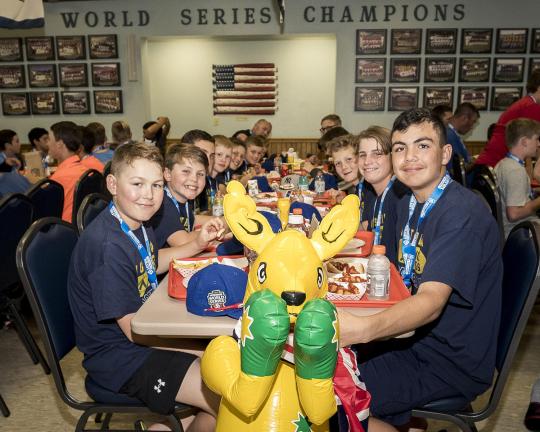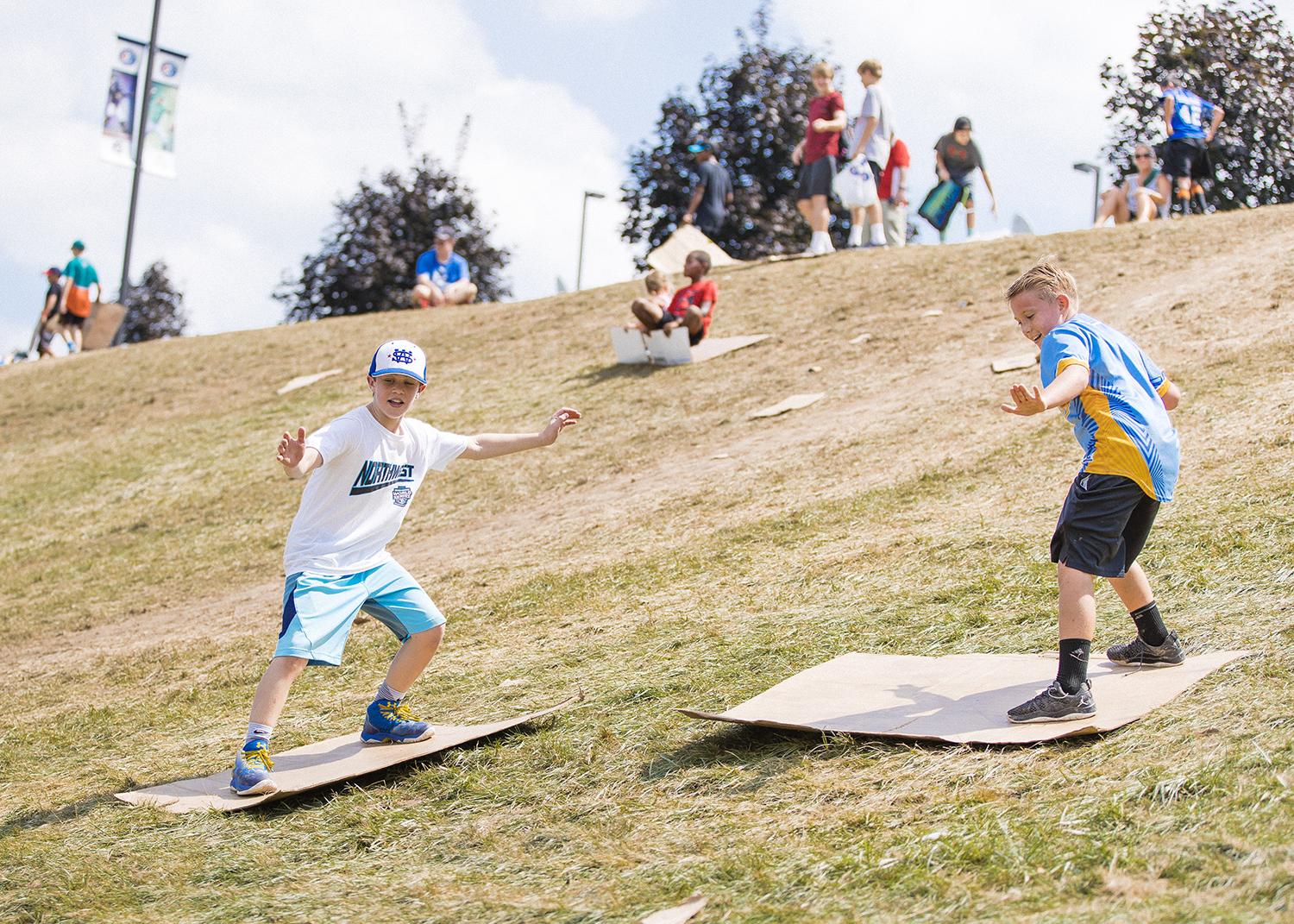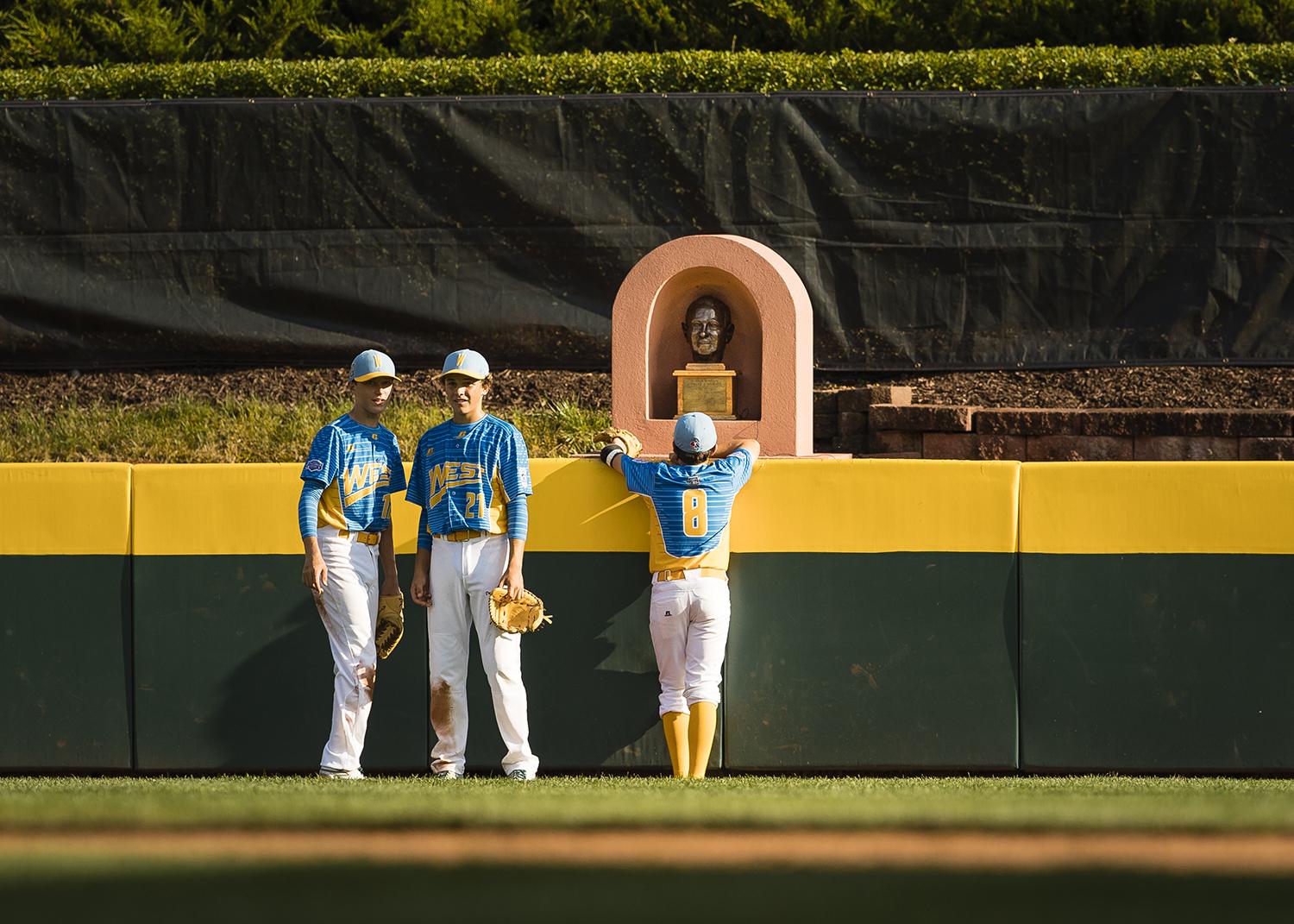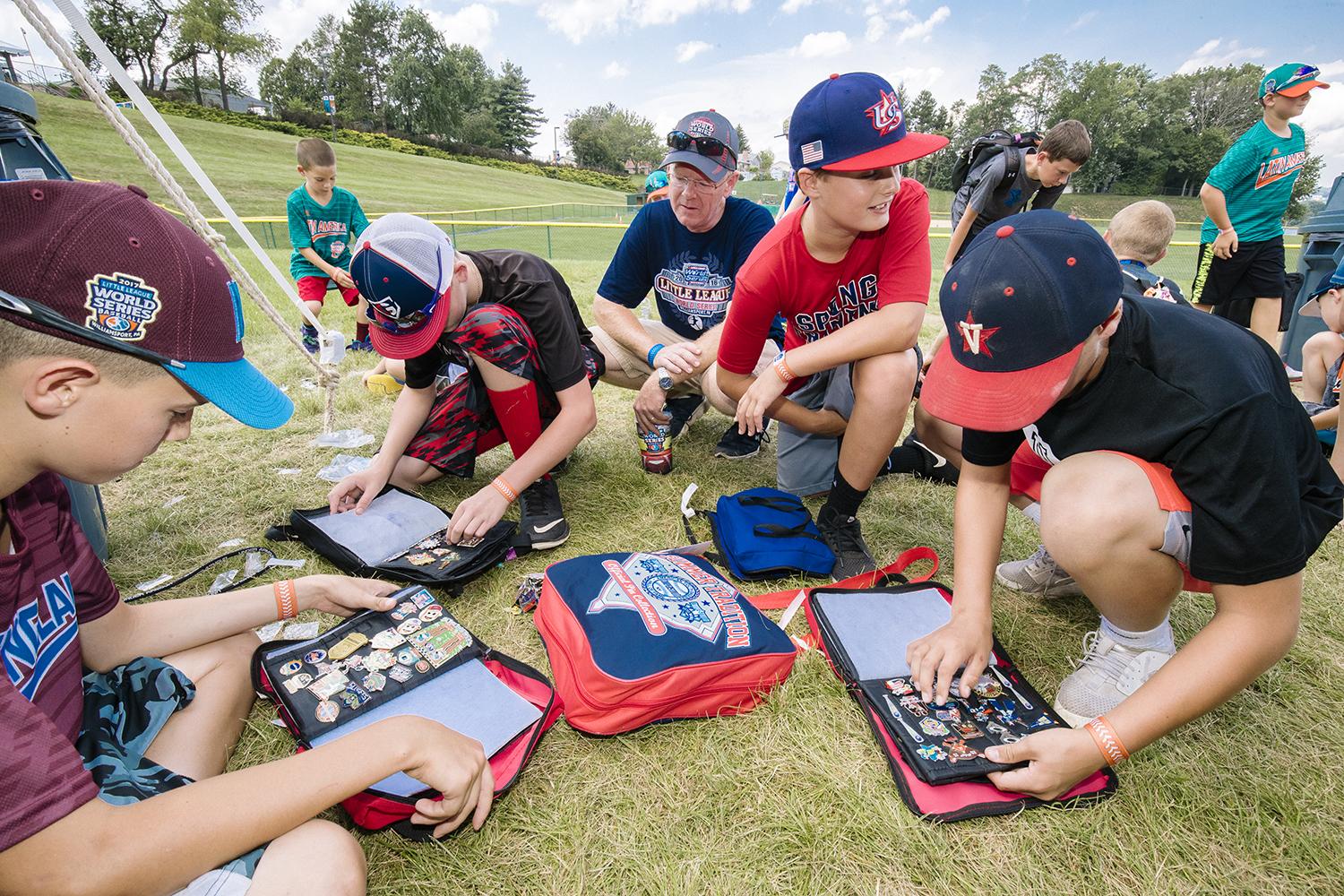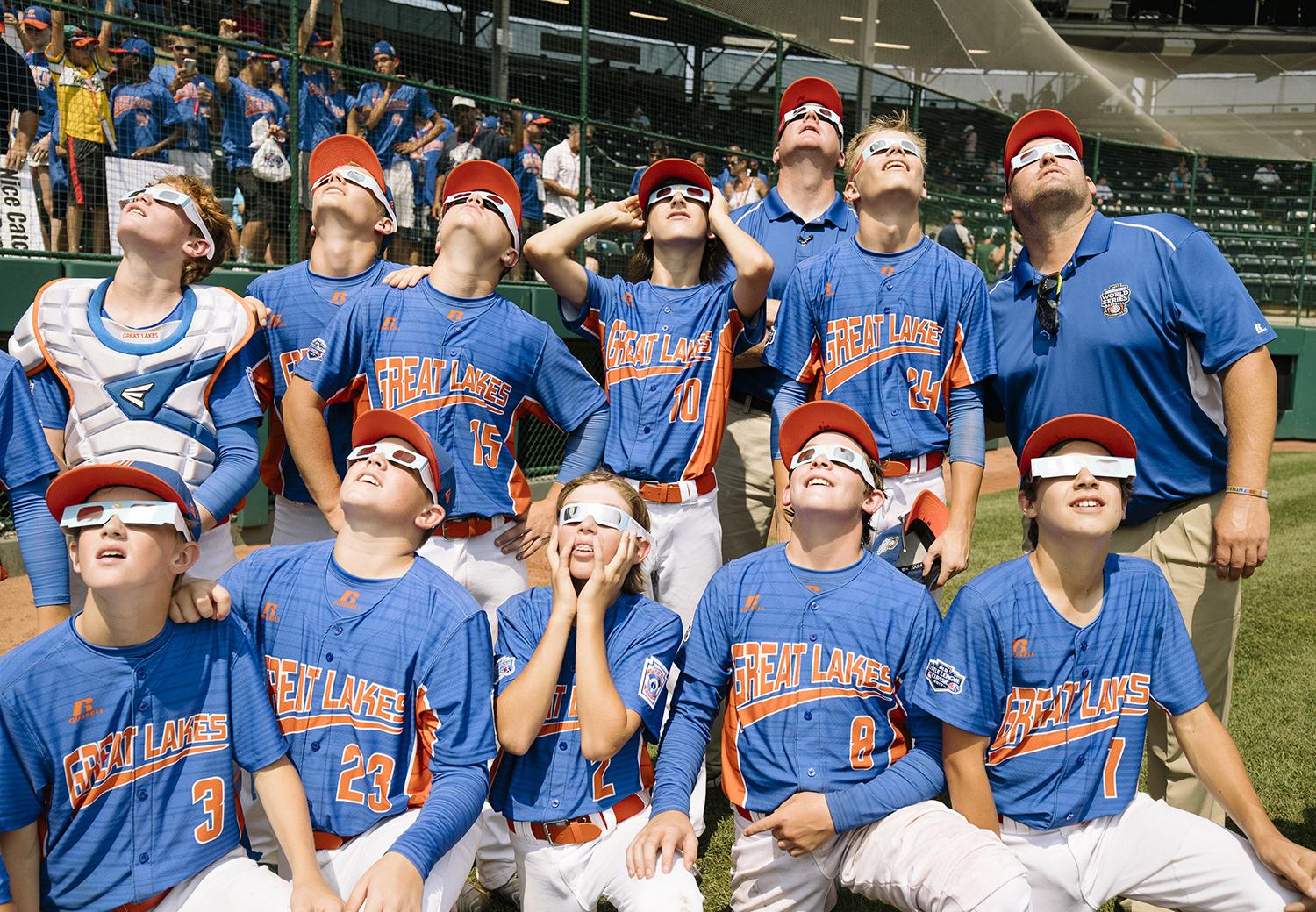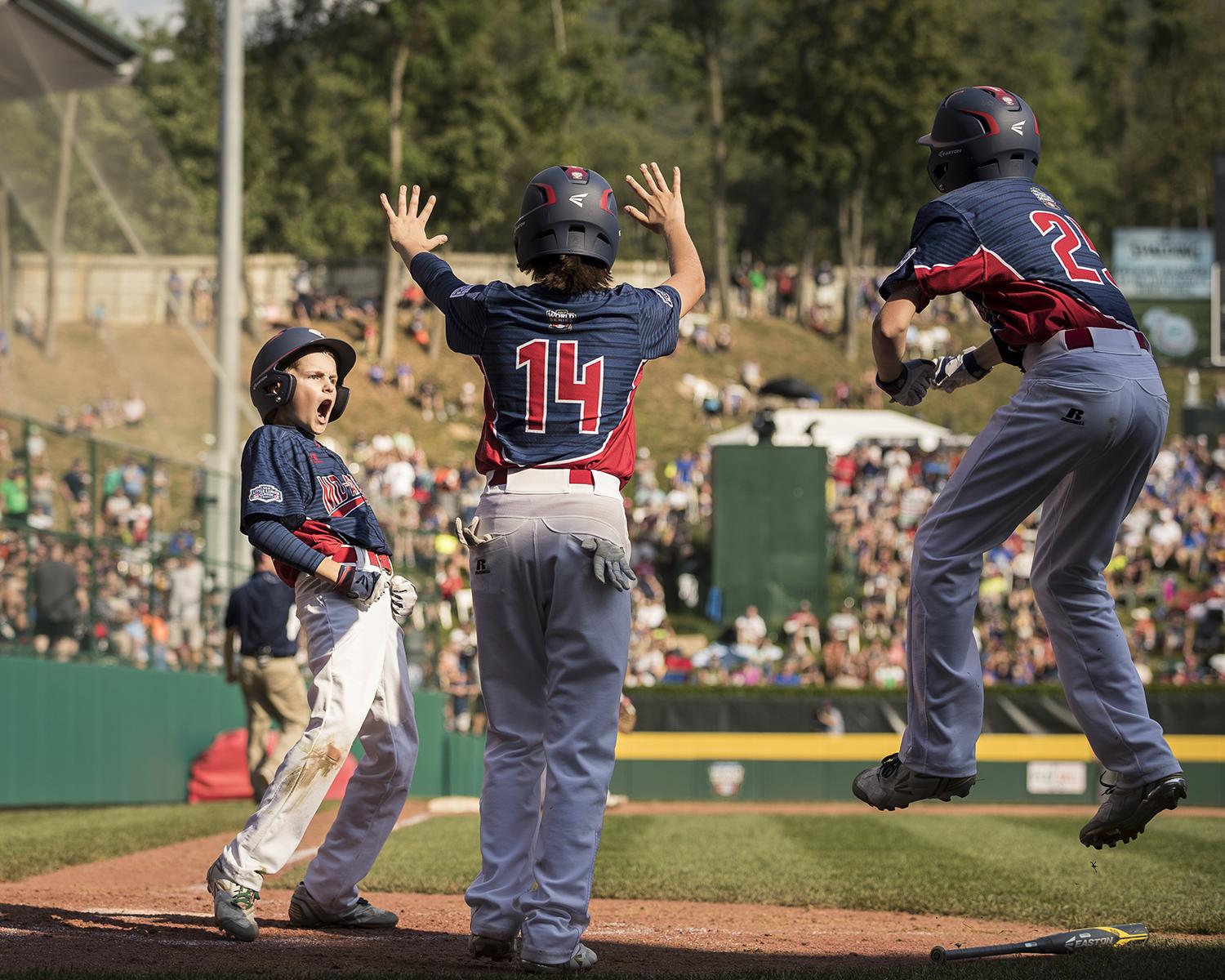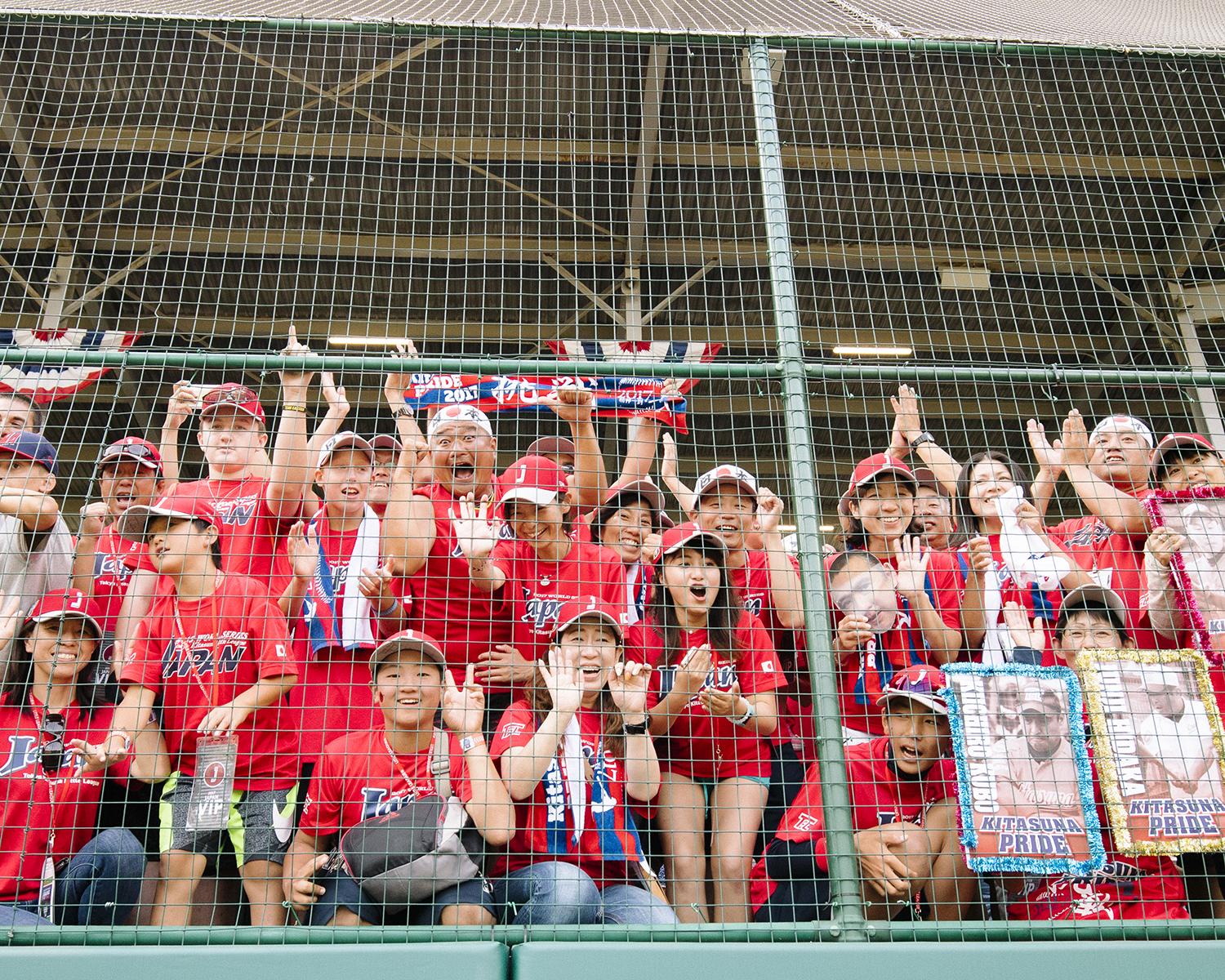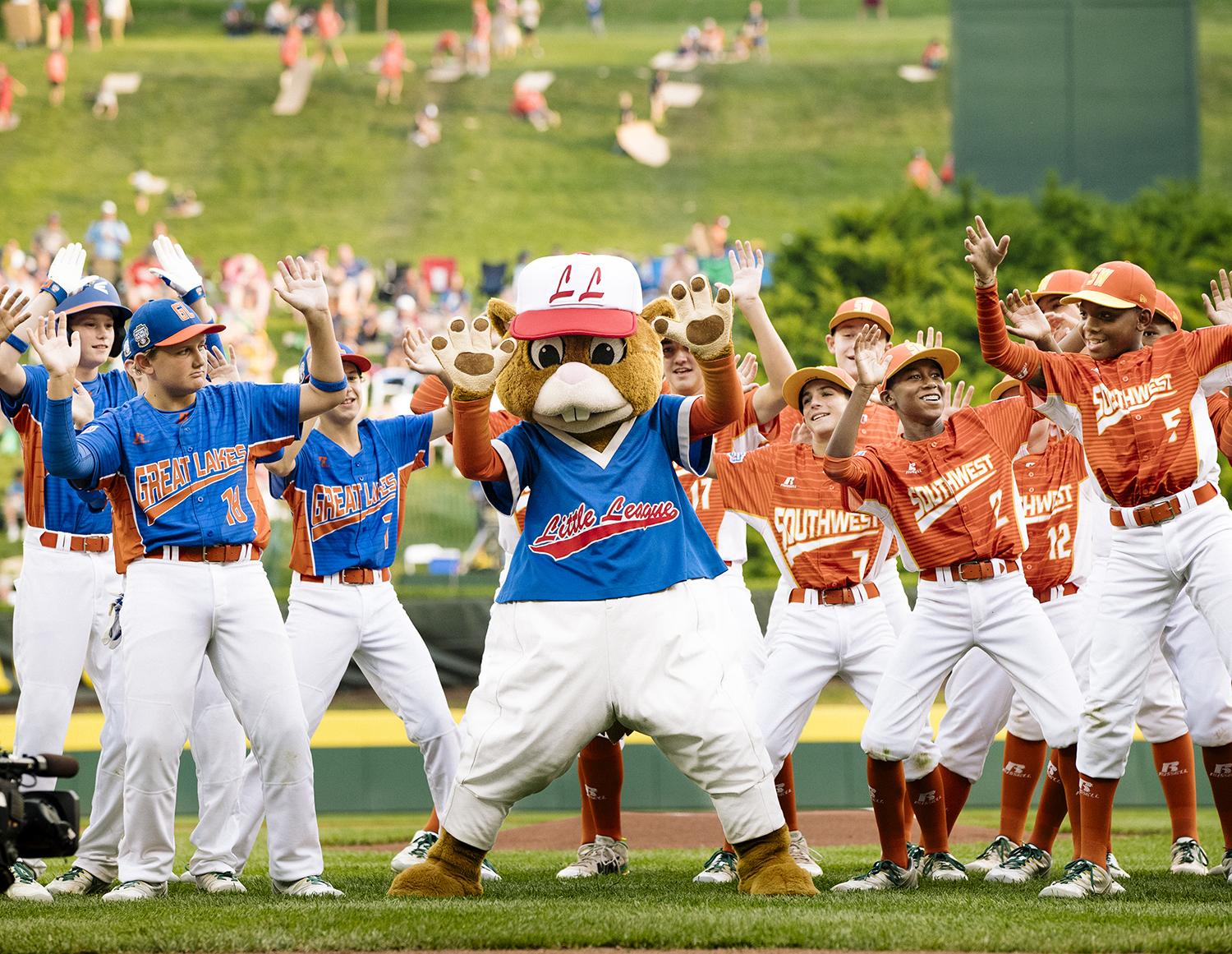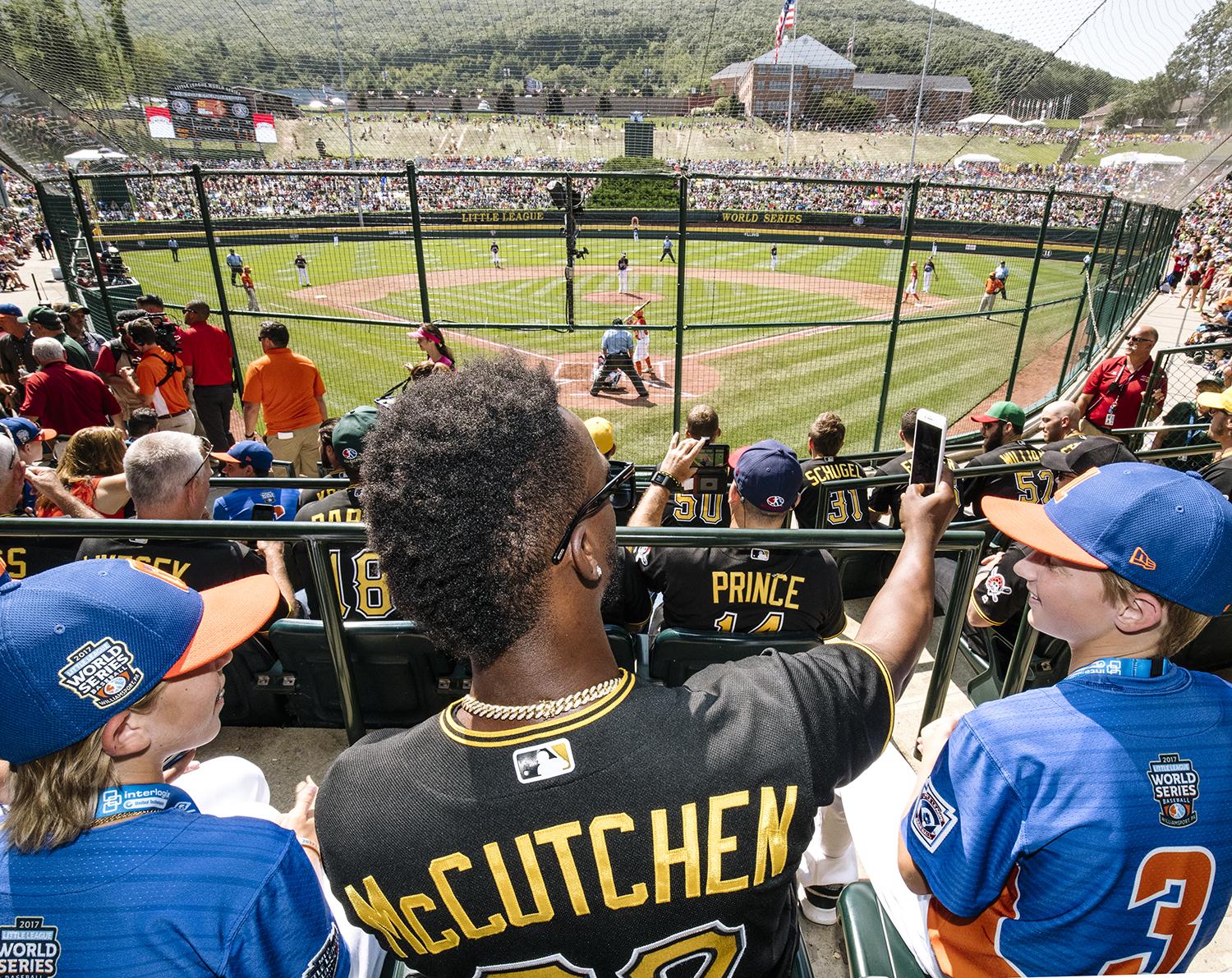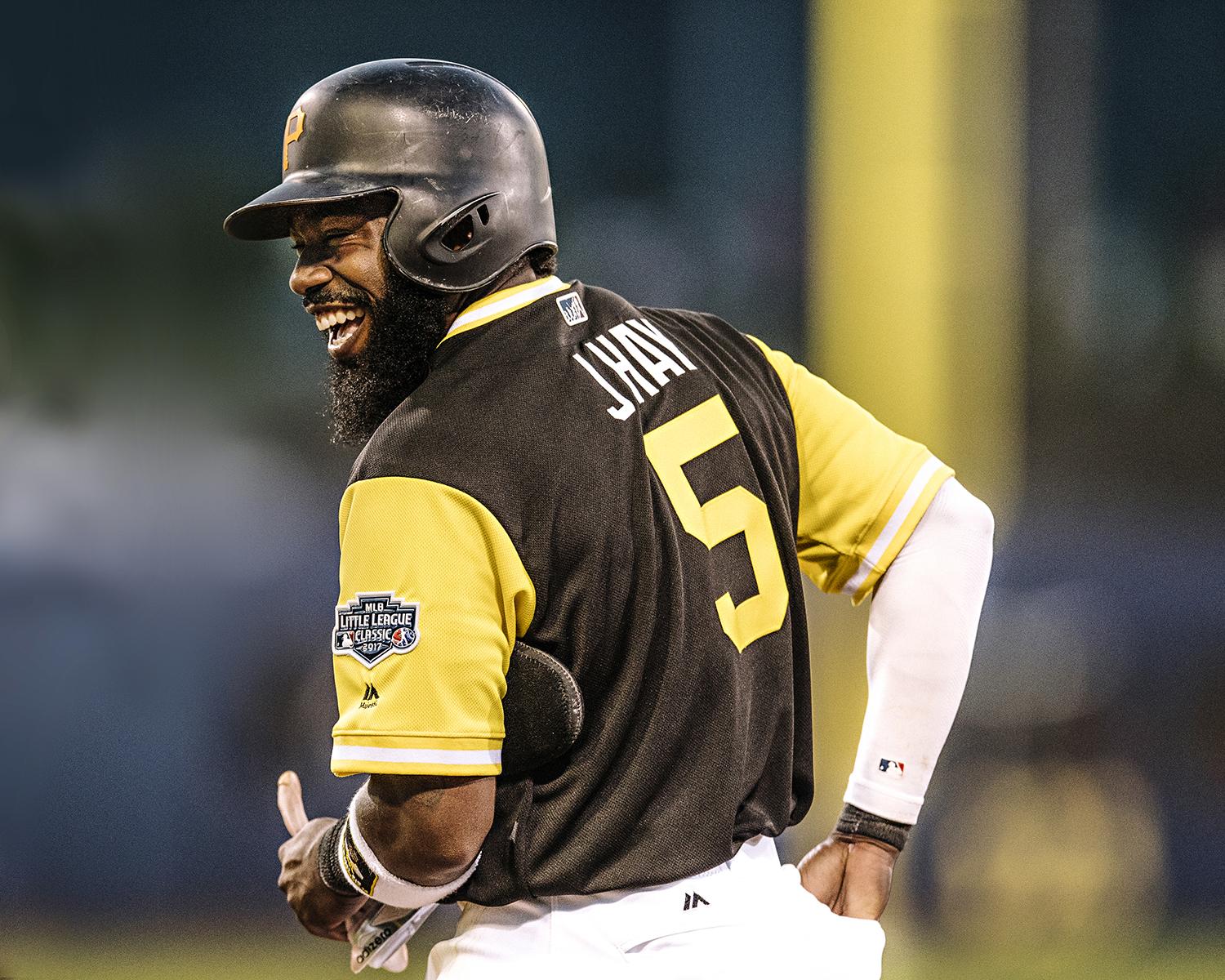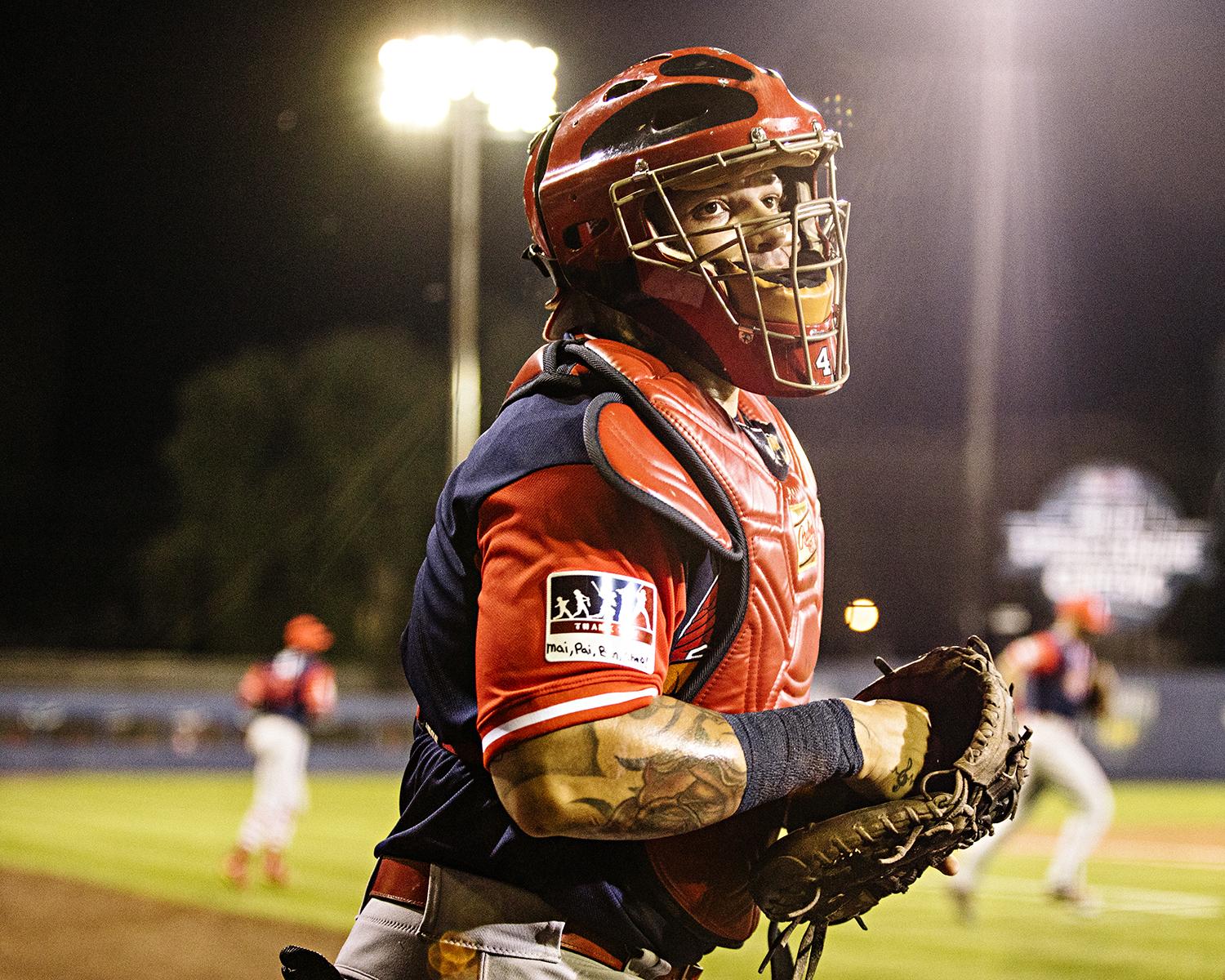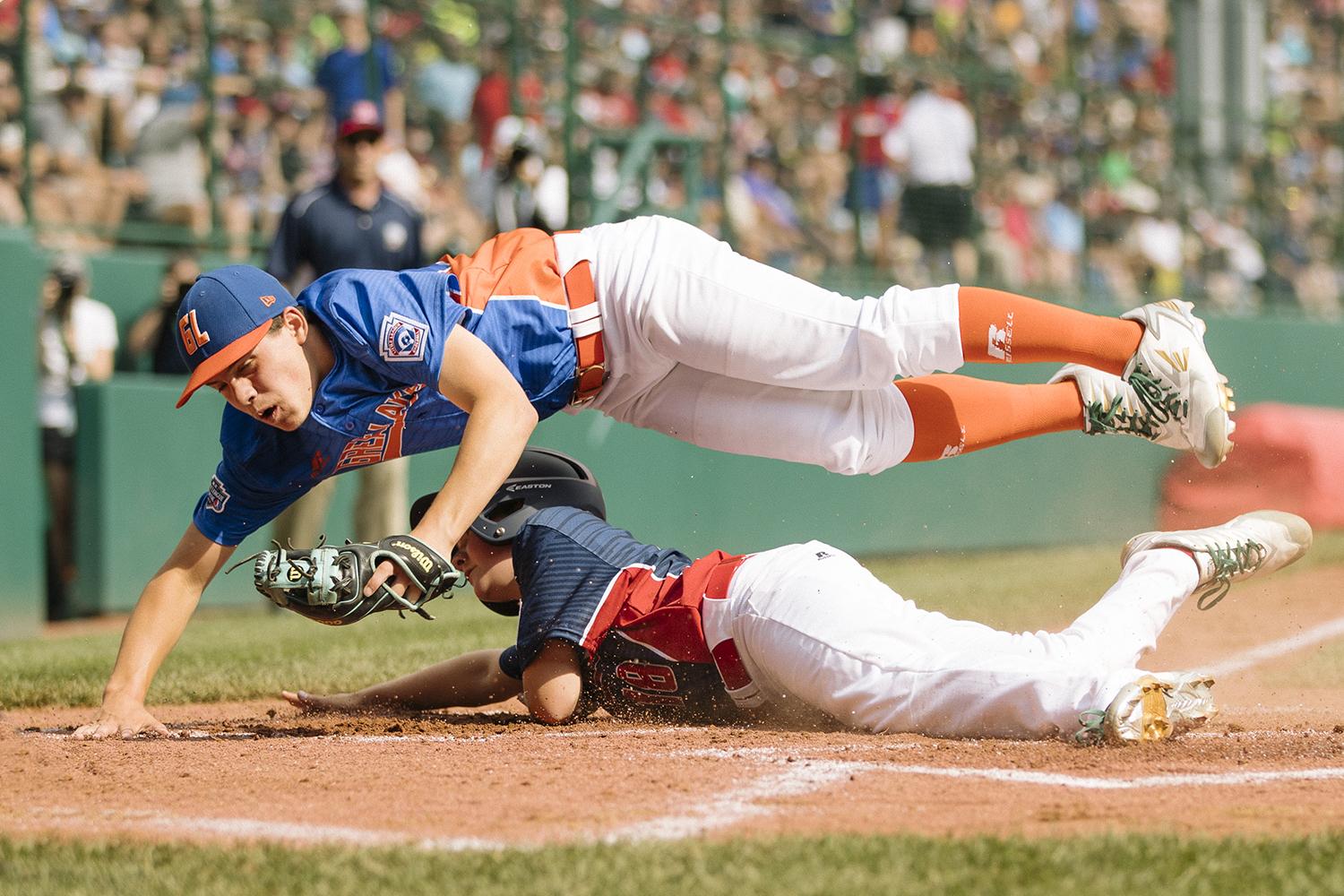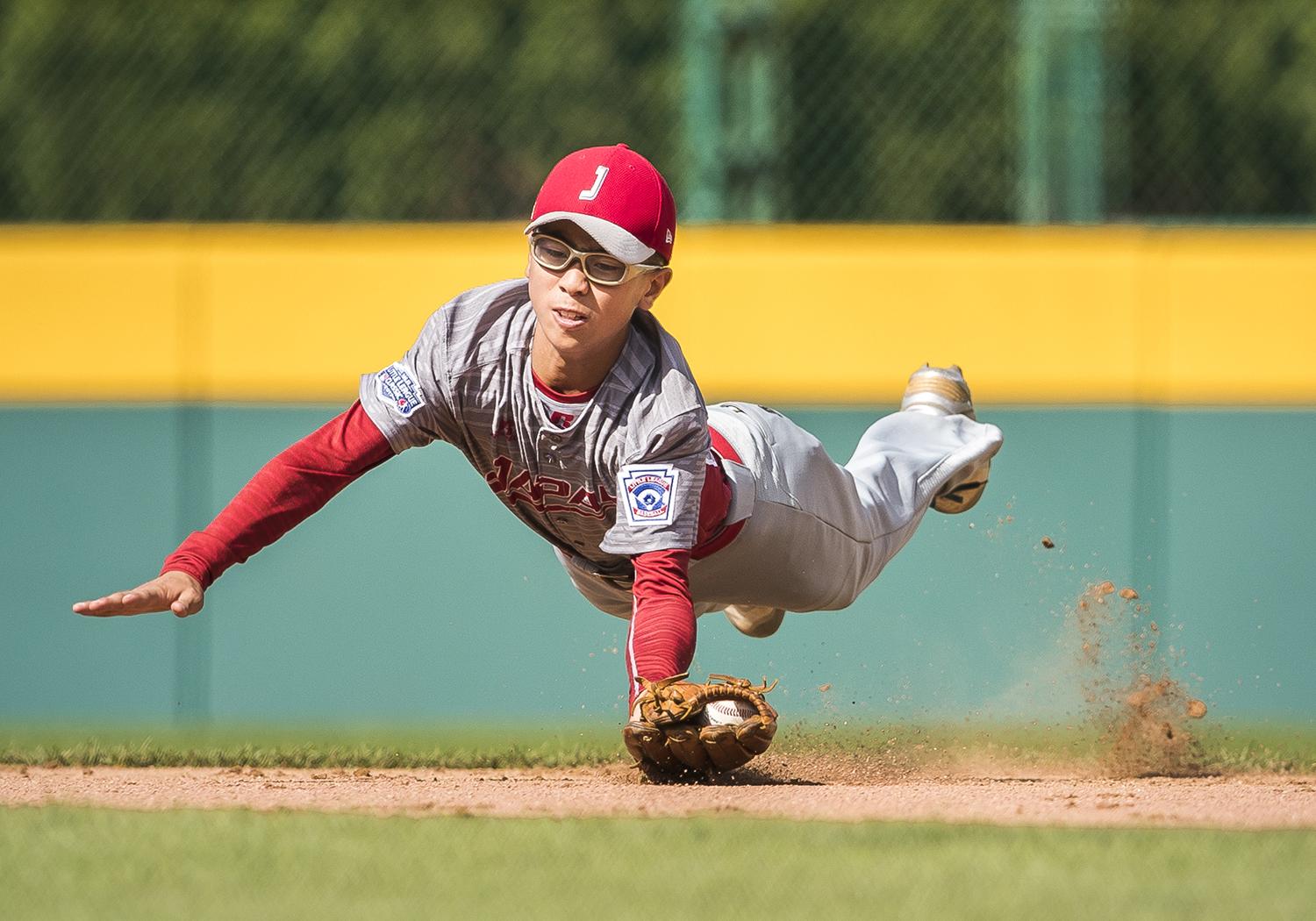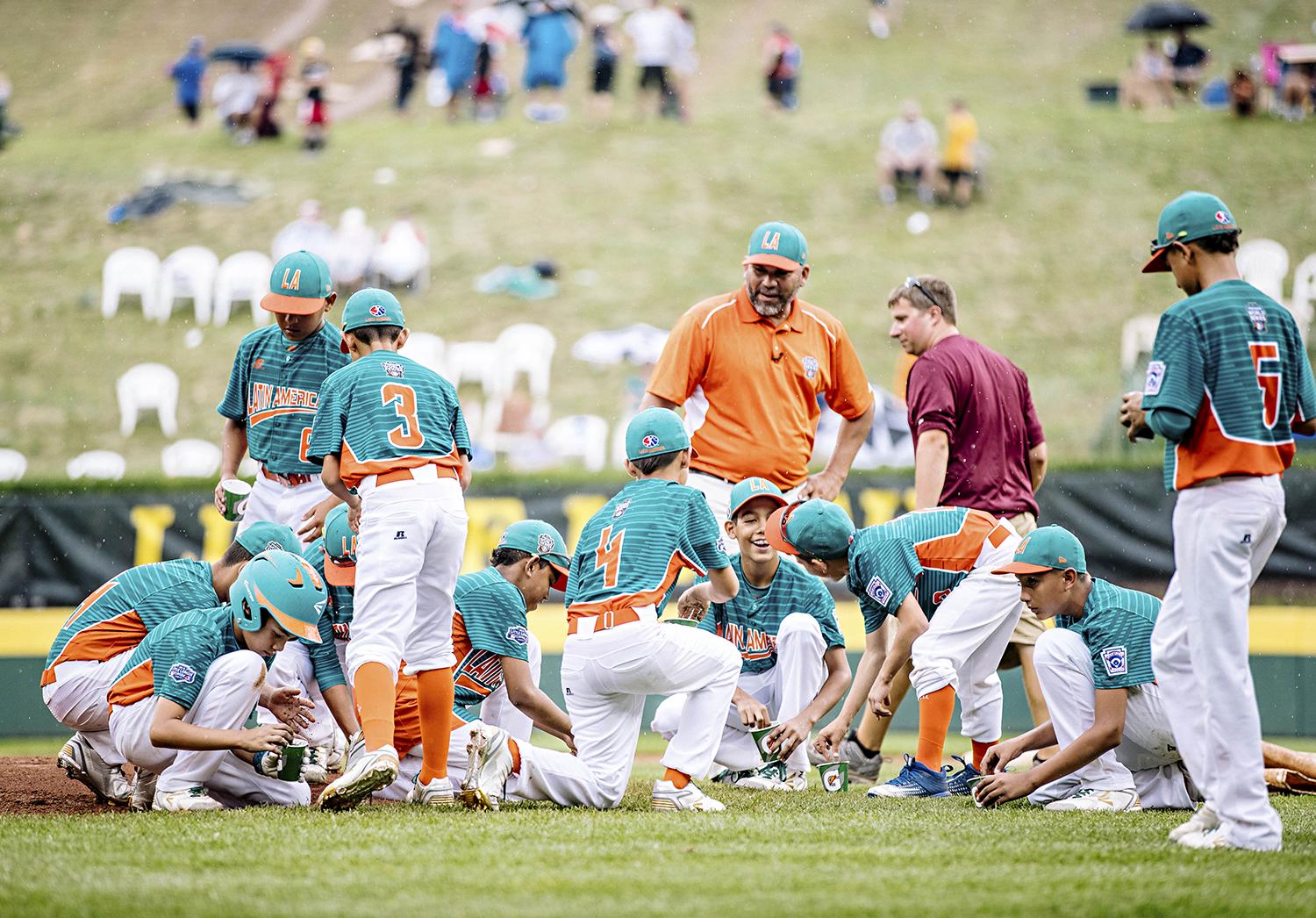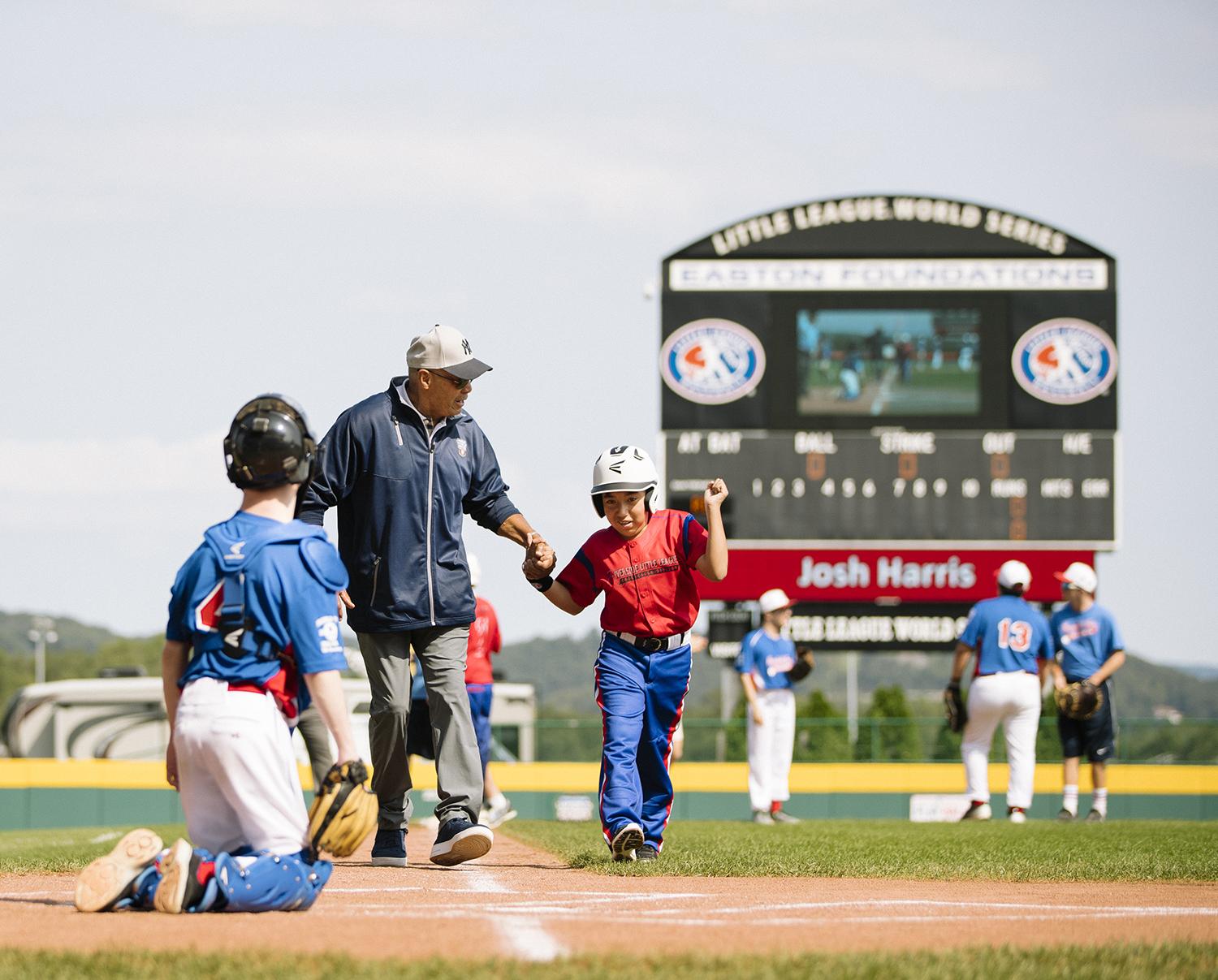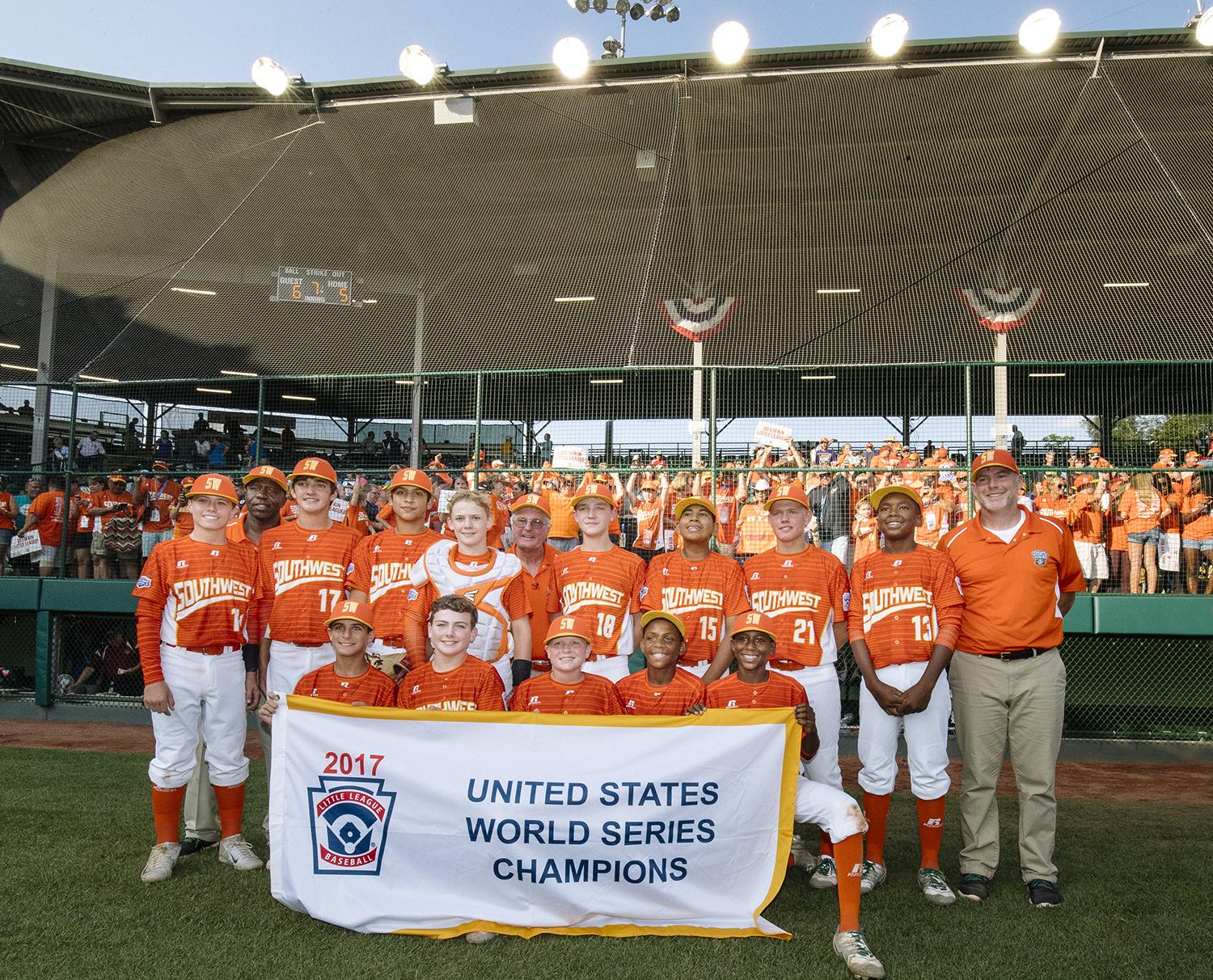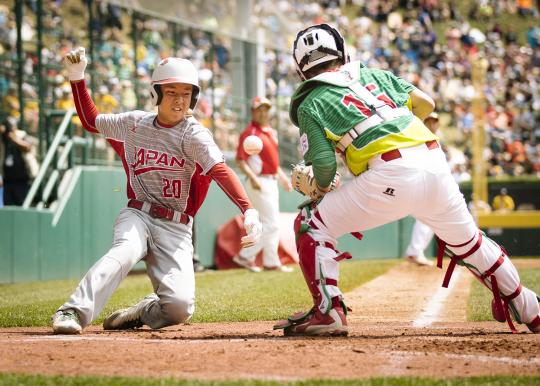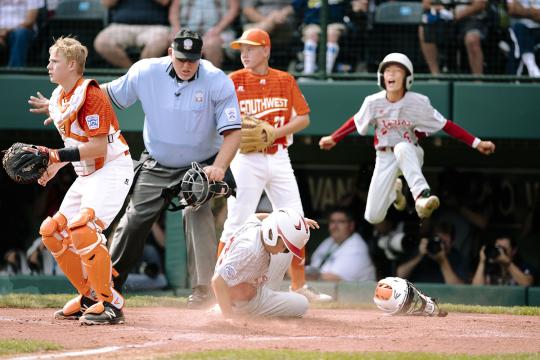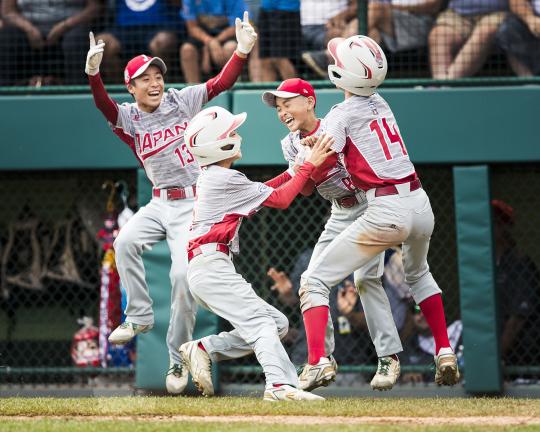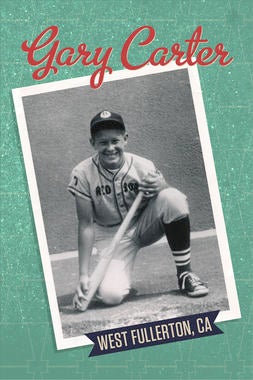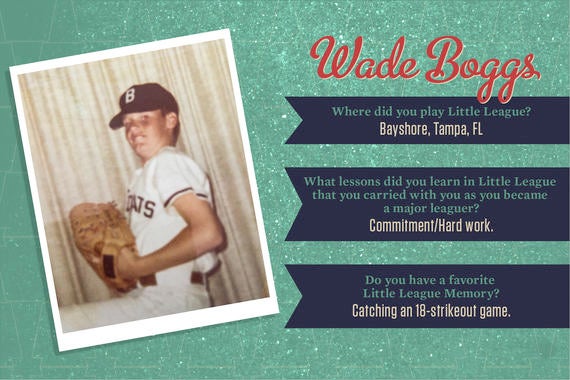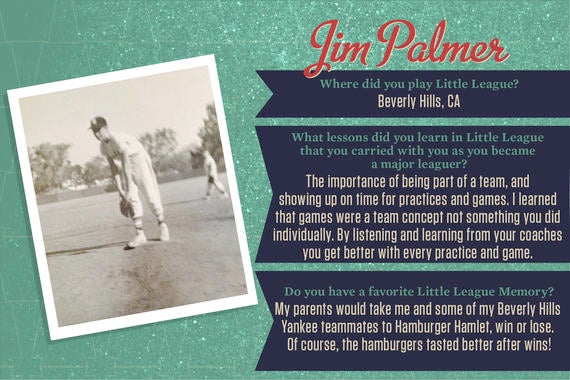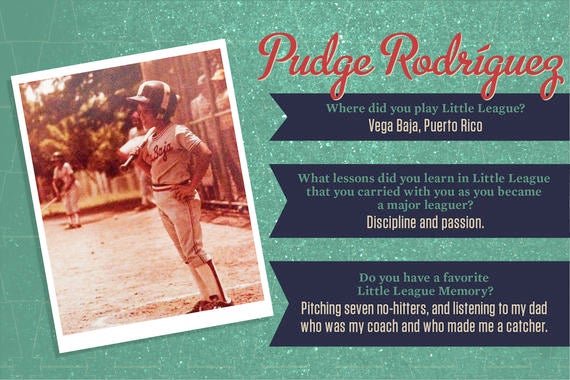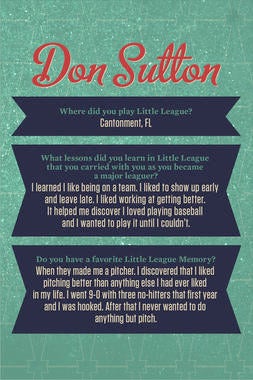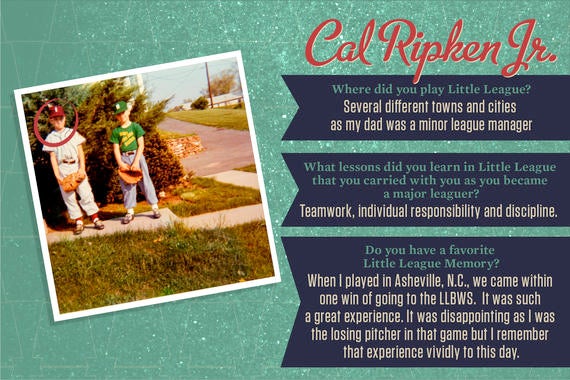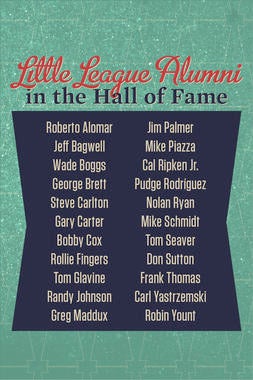Little League, Cooperstown connected through history
Photographs by Hall of Fame Traveling Photographer Jean Fruth
Williamsport and Cooperstown, two pastoral baseball havens steeped in history, tradition, passion and spirituality, and both bookends to our National Pastime. Our dreams start in Little League, which was invented in Williamsport on June 6, 1939. Our favorite baseball memories live on forever in the Baseball Hall of Fame, which opened its doors six days later.
The two small and scenic communities are located 200 miles apart, sit near the banks of the Susquehanna River, and have baseball as its engine to drive summer tourism. Cooperstown’s signature event is Hall of Fame Weekend at the end of July, while Williamsport hosts the Little League Baseball World Series over 10 days a month later.
Hall of Fame Traveling Photographer Jean Fruth, who has photographed youth baseball in the United States and several other countries over the last decade, was in Williamsport to document the entire tournament, on and off the field, providing a glimpse into the fun and games of the 71st Little League World Series.
LITTLE LEAGUE’S ROOTS
Carl Stotz was a life-long Williamsport resident who worked in the lumber business and is credited with inventing the game, getting the idea after playing catch with his two nephews. He asked them, “How would you like to play on a regular team, with uniforms, a new ball for every game and bats you can really swing?” “Mr. Little League” established 60-foot base-paths and a distance of 46 feet from the pitching mound to home plate. He built the first field and put together the first three teams. And on a Tuesday afternoon in 1939, Lundy Lumber beat Lycoming Dairy by a score of 23-8 and Little League Baseball was off and running. Stotz died in 1992 and served as Commissioner of Little League for its first 17 years in existence.
The campus on Route 15 in Williamsport is suited perfectly for the competition, while also providing plenty to do for teams and fans, all with a message and feeling that reminds us all why we are in Williamsport: Yes, this is baseball, yes this is competitive, but let’s also remember these are kids and this is much more than just about winning.
With the influx of teams and fans for the tournament, each year about 300 volunteers, three times the size of Little League International’s ENTIRE world-wide staff, lend their time to support the World Series each year.
Though the games on the field is the focus, having fun is just as much a part of the experience. Players and parents are reminded to respect the values of teamwork, friendship, community and courage. Players are reminded “to play fair and strive to win, but win or lose I will always do my best.”
Players and coaches stay in cabins in a secluded area called The Grove, off-limits to everyone else. This is where they have meals. It’s a safe haven to play ping pong, cornhole, arcade games and swim to stay loose and have fun. It’s where a wide variety of cultures come together – often with Google Translate at the catalyst -- and new traditions are learned. It’s where friendships are developed. The Grove’s culture helps remind the youngsters that they are kids, that they are 12 years old. It’s about having fun and broadening horizons.
As fans walk down the hill from the Museum and by the Grove, they find themselves at two incredible baseball diamonds where all of the tournament games are played. There is no admission charged to enter the campus or watch the game. Concessions are affordably priced.
Lamade and Volunteer stadiums sit back-to-back and are separated by a concourse. Lamade has hosted every championship game since 1959 and attendance has reached 45,000 with its massive outfield berms. The berms are so steep that it becomes a makeshift summer ski area for kids, who before, during and after games attempt to navigate the incline on pieces of cardboard, akin to snowboarding or sledding. A bust of Howard Lamade, a generous champion for youth baseball in Williamsport and for whom the stadium is named, is placed behind the center field wall, between the bullpens. During the tournament it is visited often by the players, and it’s a tradition for the winning team to run out to center field, leap against the wall, and touch the head on the bust.
Volunteer Field opened in 2001 and though smaller than Lamade, is equally impressive. The field was built to accommodate the tournament growing from eight to 16 teams. Just below Volunteer are practice fields and batting cages where teams not playing keep their skills sharp.
A pool of 25 volunteer professionals and a few interns attend the World Series each year to assist Williamsport’s one full-time groundskeeper and keep both playing surfaces manicured.
The concourse itself is the hub of activity throughout the tournament. A wide-variety of food options and places to mingle, activity centers and fun zones, a “brackets board” that provides updated results and plenty of photo opportunities keep the concourse hopping. There is seemingly something for everyone on the concourse, including pin trading, a very big part of the Williamsport experience.
Little League organizers were even prepared for the rare solar eclipse, handing out 30,000 pair of “eclipse glasses” to assure everyone could safely get a glimpse of atmospheric history in-between pitches. Lance Van Auken, executive director of the World of Little League Museum, noted that this was the only solar eclipse visible in Williamsport in the 71-year history of the World Series, and will be the last one visible during a World Series until a Tuesday afternoon in 2259.
LET THE GAMES BEGIN
There are nearly 2.4 million boys and girls in the US and more than 80 other countries around the world who participate in all divisions of Little League Baseball and Softball, making it the world’s largest organized youth sports program.
Earning a trip to Williamsport is incredibly difficult. More than 6,500 teams (some 6,000 in the US and 500 outside) compete for one of the 16 coveted slots. Those teams combine to play more than 16,000 qualifying games, the equivalent of more than six Major League Baseball seasons.
The tournament included only eight teams until 2001, when the number of regions doubled to 16: eight regions in the United States and eight regions representing the rest of the world.
This year’s World Series featured teams from Australia, Canada, Dominican Republic, Italy, Japan, Mexico, South Korea and Venezuela, in the International bracket. The US bracket included teams from California, Connecticut, Michigan, New Jersey, North Carolina, South Dakota, Texas and Washington. Since 2011, each bracket has participated in a double-elimination format until the final game, which is winner-take-all. Every team plays a minimum of three games, with those eliminated after playing only twice staging a crossover consolation game against a team from the other bracket.
Each of the 16 teams travel large rooting section of parents, grandparents, siblings, friends and fans, who sit together in team colors behind the dugouts and cheer enthusiastically.
Before each game, Dugout, the Little League mascot, dances with each team, reminding both the players and the fans that having fun is a part of the equation. A parent and team captain from each team reads the Little League pledge (or a variation thereof), which has been in existence since the 1950s, from in front of home plate and over the stadium public address system. “I trust in God, I love my country, and will respect its laws, I will play fair, and strive to win, but win or lose, I will always do my best.”
All of the players are introduced, with each one shaking the hands of all of the umpires and their teammates, before going to the foul lines. The coaches do the same. And after the very first game each team plays, each player is deservedly awarded a participation medal for making it all the way to Wiliamsport as the journey is as impressive as making the cut.
The World Series festivities kick off with the Little League Grand Slam Parade, which is staged by the Chamber of Commerce and runs through the streets of Williamsport. Every team is on its own float. This year, Eddie Murray served as its Grand Marshal. “It’s all about having fun,” the Hall of Famer reminded the players prior to the parade.
THE MLB LITTLE LEAGUE CLASSIC
This year’s World Series experience was even more memorable than usual for teams and fans. For the first time in history, Major League Baseball brought teams to Williamsport to co-mingle today’s stars with the future of baseball, and to play a regular season game. The Pirates and Cardinals were the teams selected.
Some of the major leaguers visited the Grove and most watched games at both stadiums. Andrew McCutchen sat behind home plate and reminded the Little Leaguers that playing is all about having fun, posing for an endless number of selfies.
Said David Freese, Pittsburgh’s third baseman: “It’s just a game. I keep preaching to the kids that this is just a game. It doesn’t define you.”
“The game is hard enough, so I told the kids to have fun and enjoy themselves,” said Josh Harrison, who cut his teeth playing Little League in Cincinnati.
That evening the Cards and Pirates played the first MLB Little League Classic, at Bowman Field, home of the New York-Penn League Williamsport Crosscutters, the “A” affiliate of the Phillies. The ballpark opened in 1926 and is the second-oldest minor league stadium in the country. Major League Baseball gave the venerable stadium a massive makeover, and brought in a grounds crew of 60, who over six months made massive improvements to the 91-year old ballpark.
In a preview of Players’ Weekend, which took place the following weekend across the majors, players on both clubs sported non-traditional jerseys, inspired by youth league uniforms, complete with nicknames. The jerseys featured a patch on the right sleeve where a player could write the names of family and friends who helped them to succeed in baseball. Socks, wristbands and colored bats rounded out the retro look-and-feel of the uniforms and equipment.
The Pirates won the game 6-3 and the capacity crowd of 2,596 included all of the Little League World Series teams, as well as other teams from the Williamsport area.
THE TOURNAMENT RESUMES
And in the aftermath of the MLB Little League Classic, the Little League World Series continued. The Grosse Pointe (MI) Woods-Shores team beat Hills Little League from Sidney, Australia to win the consolation games among the first four regions eliminated. The Fairfield (CT) Americans, representing New England, won its first three games and teams from Holbrook (NJ) and White Rock-South Surrey (Canada) each won a pair of games, giving their fans reasons to cheer. Los Bravos de Pontezuela from Santiago represented the Dominican Republic well, but wasn’t able to advance far, while the team from Japan was looking very strong in the early rounds.
As teams were eliminated, it was not unusual to see the players scoop up a small amount of dirt on the mound or basepaths to take home as a keepsake.
With the tournament rolling into the final weekend, the annual Little League Challenger Exhibition Game was played. The Challenger Division was established in 1989 as a separate division of Little League to enable boys and girls with physical and mental challenges, ages 4-18, or up to age 22 if still enrolled in high school, to enjoy the game of baseball along with the millions of other children who participate worldwide. Today, more than 30,000 children participate in more than 900 Challenger Divisions worldwide.
Every player had his or her chance to bat. Hall of Famer Reggie Jackson visited with the participants and coaches, and coached third base. “Sports is a way for everyone to enjoy life and experience the team concept. You learn to depend on others, and you learn to contribute,” said the former all-time great.
It’s evident that Little League Baseball does everything it can to assure that the kids have fun and focus on loving the game. And with a love for the game and having fun at the core of a child’s playing career, the table is set for a few of them to one day call the major leagues home.
Jeff Idelson is the President of the National Baseball Hall of Fame and Museum
Jean Fruth is the Traveling Photographer for the National Baseball Hall of Fame and Museum


